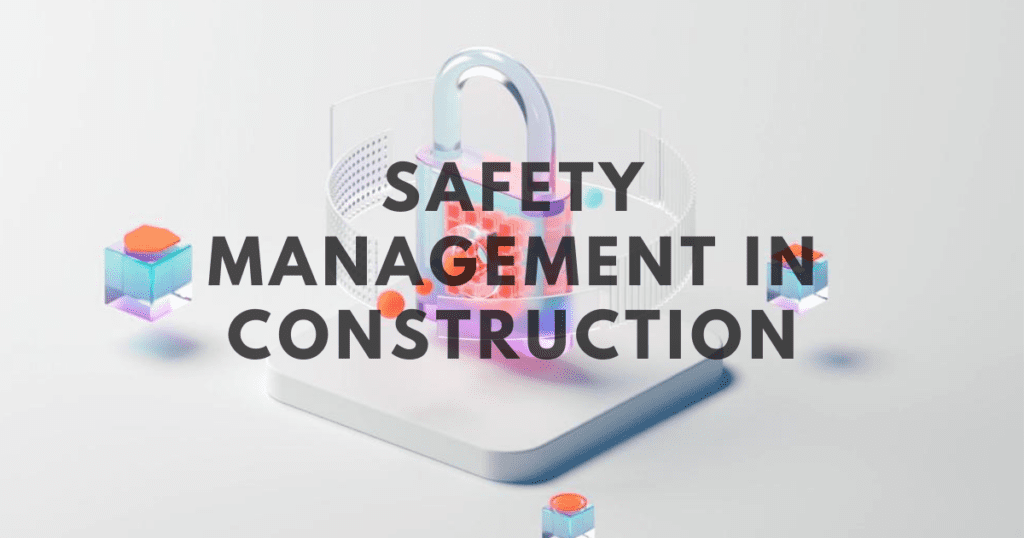Welcome to the Ultimate Guide to Construction Safety Management! Here, we’ll provide you with the latest safety practices and techniques to ensure your workers and projects remain safe in 2023.
With construction sites being inherently hazardous, even a minor safety lapse can have catastrophic results. In this rapidly growing industry, safety management has become more crucial than ever to protect workers and prevent costly delays or shutdowns.

This guide covers all the essential components of construction safety management, including hazard identification, incident planning, employee training, and equipment maintenance. We’ll also discuss safety regulations and compliance, common hazards, preventative measures, and technology advancements.
As safety regulations and laws continue to evolve in 2023, it’s essential to stay informed to ensure compliance and create a safer working environment for your workers. Whether you’re a contractor, safety manager, or site supervisor, this guide will equip you with the knowledge and tools to keep construction sites safe.
Key Takeaways
- Key elements of construction safety management include hazard identification and risk assessment, safety planning and protocols, equipment and tool maintenance, and employee training and education.
- It’s essential to comply with safety regulations, including those set forth by the Occupational Safety and Health Administration (OSHA), and to be aware of common hazards in construction, such as falls, electrocution, and struck-by or caught-in/between accidents.
- Preventative measures, such as developing a safety culture, providing personal protective equipment, implementing safety inspections and audits, and establishing emergency response protocols, can help reduce the risk of accidents and create a safer work environment.
- Technology and innovation are also changing construction safety management, with wearables and drones providing new tools for safety tracking and inspections.
Use the software to manage the whole safety management in construction management process
Key Elements of Construction Safety Management
To ensure a safe construction site, it’s essential to have a solid safety management plan in place. Here are the key elements of construction safety management that you need to know to protect your workers and projects in 2023.
First, hazard identification and risk assessment are the backbone of safety management. By identifying potential hazards and assessing the level of risk, you can take proactive steps to prevent accidents from happening.
Second, safety planning and protocols are necessary to ensure that safety is always at the forefront of your operations. From safety meetings to regular safety inspections, protocols help to prevent safety lapses and create a safety culture.
Third, equipment and tool maintenance play a crucial role in preventing accidents. Regular maintenance of equipment and tools helps to identify potential hazards and ensure that they are in good working condition.
Fourth, employee training and education are critical components of safety management. Workers need to understand potential hazards and how to respond to them. Training should be ongoing and cover all aspects of safety, from using equipment to emergency response procedures.
Overall, a well-rounded safety management plan should include all of these key elements. By focusing on hazard identification, safety planning, equipment maintenance, and employee training, you can create a safe and productive construction site in 2023.
Safety Regulations and Compliance
In 2023, compliance with safety regulations will be more critical than ever in the construction industry. The Occupational Safety and Health Administration (OSHA) sets mandatory safety requirements for all sites within America that address various safety hazards, such as fall protection and hazardous materials handling.
Complying with OSHA regulations necessitates creating safety protocols and training your workers on proper safety techniques. Regular safety inspections should also be conducted to guarantee compliance, and you should have a strategy in place for reporting and investigating accidents.
Researching and adhering to state and local safety regulations that may differ depending on where you live is essential for construction safety. Organizations such as the National Institute for Occupational Safety and Health (NIOSH) and American National Standards Institute (ANSI) offer additional guidelines and standards related to safety in construction.
Overall, adhering to safety regulations and standards is paramount for creating a secure work environment for your workers. By prioritizing safety in 2023, you can protect them and avoid costly accidents or project delays down the line.
Common Hazards in Construction
Construction sites can be dangerous places, with many potential hazards that can cause serious injury or even death. Here are some of the most common hazards in construction that you need to be aware of in 2023.
First, falls are one of the leading causes of injury and death in construction. Whether from scaffolding, ladders, or rooftops, falls can be deadly. Proper fall protection, including harnesses and guardrails, is essential to prevent falls.


Second, electrocution is a hazard that is often overlooked in construction. Workers can come into contact with live electrical wires, resulting in severe burns or even death. Proper grounding and lockout/tagout procedures are essential to prevent electrocution.
Third, struck-by accidents occur when workers are hit by falling objects, such as tools or building materials. Workers can also be struck by vehicles, such as cranes or trucks. Proper use of personal protective equipment and proper storage of materials can prevent these accidents.
Finally, caught-in or between accidents occur when workers are caught in or crushed by heavy machinery or equipment. Trench collapses, machinery malfunctions, and improper use of equipment can all result in these types of accidents.
To prevent these hazards, it’s essential to have a comprehensive safety management plan in place that includes hazard identification, risk assessment, and proper training for your workers. By taking the necessary precautions and staying vigilant, you can prevent accidents and make your construction site a safer place to work in 2023.
Preventative Measures
Preventing accidents in construction necessitates a proactive approach. Here are some preventive measures you can take in 2023 to safeguard your workers and projects.
Establishing a safety culture on your construction site is paramount. By prioritizing safety, workers will take safety more seriously and report potential hazards. Promoting open communication, providing safety training, and rewarding safety accomplishments will all help foster this culture of safety on your jobsite.
Second, providing personal protective equipment (PPE) can help to avoid injuries. Hard hats, safety glasses, gloves and safety shoes are just a few examples of PPE that can shield workers from hazards. It is essential to provide the correct PPE for the task at hand and ensure workers receive training on its proper use.
Third, conducting safety inspections and audits can help identify potential hazards and prevent accidents. Regular safety checks guarantee that safety protocols are being followed and equipment and tools are in good working order.
Finally, creating emergency response protocols is essential in case of an accident or other crisis. Workers should be taught first aid techniques, evacuation protocols and reporting accidents appropriately.
By taking these preventive measures in 2023, you can create a safer workplace and lower the likelihood of accidents on your construction site. Safety is everyone’s responsibility – it’s up to us all to make safety our top priority.
Technology and Innovation in Construction Safety Management
Technology and innovation have enabled new methods for managing safety in construction. Here are some ways technology will revolutionize construction safety management in 2023.
Technology plays a fundamental role in safety management. Digital tools and software are indispensable for everything from risk assessment to incident reporting, as well as tracking safety metrics and recognizing trends that could indicate potential hazards.
Second, wearables are becoming increasingly prevalent in construction safety management. Smart hard hats, vests and glasses can track a worker’s location and vital signs, even detect when they may be at risk or have fallen. This data can be used to identify areas for improvement within safety management practices.
Third, drones are being utilized for safety inspections in construction. They can quickly and securely access hard-to-reach places like roofs or high scaffolding to provide detailed visual assessments. This technology helps identify potential hazards and enhances safety measures during the building process.
Other advances in construction safety management involve virtual reality training, which can simulate hazardous scenarios and help workers hone their skills safely; and augmented reality, which provides real-time information to workers at the job site.
By 2023, technology and innovation will revolutionize construction safety management. Companies can utilize these tools to strengthen safety protocols, reduce accidents, and create a safer working environment for their personnel.
The Bottom Line
In 2023, construction safety management should be a top priority for any construction company. By focusing on safety, construction companies can protect their workers, reduce accidents, and ensure the success of their projects.
Remember, safety is everyone’s responsibility, and it’s up to all of us to prioritize safety in construction. Let’s work together to create a safer future for the construction industry in 2023 and beyond.


